An outdoor dining space atop gravel can look rustic or modern, is perfect for outdoor entertaining, and makes an outstanding option for a lawn-free backyard. But that’s not to say that working with gravel is without its issues. From the style decisions to the nitty-gritty of installation and maintenance, here’s what you need to know to get a great gravel spot for your alfresco dining.
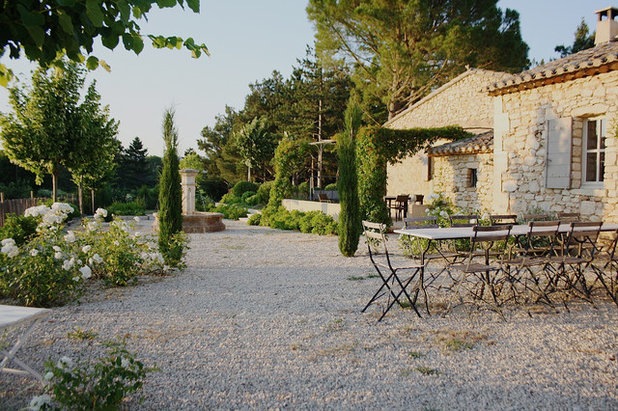
Holly Marder
1. Get inspired by centuries of tradition. When homeowners Harry Dolman and Chantal Dussouchaud first saw the home they would eventually purchase, the centuries-old estate was in disrepair — but the location in the south of France, paired with the amazing bones of the home and grounds, made it irresistible. After seven years of hard work and the help of many local artisans, the property is now fully restored; it includes a traditional pebbled rose garden with a fountain and boxed herbs, and an outdoor dining area.
No matter where you live, you can embrace the tradition of a classic gravel garden by incorporating some of the same features, such as:
- Folding bistro chairs
- Roses and lavender
- Fresh herbs
- A bubbling fountain
See the rest of this home
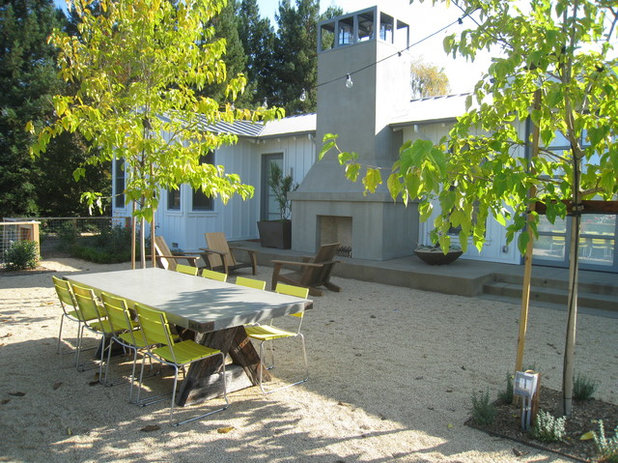
Garden Architecture
2. Add a few shade trees. A dining area on gravel is a chic way to have a lawn-free backyard, ideal for dry climates and areas experiencing a period of drought. Once mature, trees can thrive with little to no assistance, and offer great benefits in the form of shade, air cleaning and beauty. If you’re planting new trees on your property, careful advance planning is essential.
Keep these tips in mind before you plant:
- Check with your city before digging to be sure you won’t disturb any underground utilities.
- Consult with knowledgeable staff at a local nursery, or call an arborist, to find out which trees will do well in your region.
- Consider the mature size of the tree, and be sure to plant it far enough from your home and other structures so it won’t cause problems down the line.
15 Great Ideas for a Lawn-Free Yard
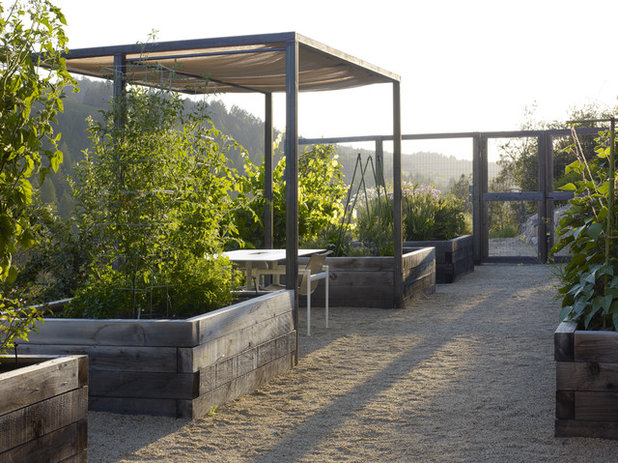
Blasen Landscape Architecture
3. Incorporate your edible garden. Raised beds and gravel paths surround this outdoor dining area, making it feel like a seamless part of the landscape. A simple steel pergola and table bring a distinctly modern vibe to the otherwise classic French potager-style garden for a welcome blend of styles.
Other ideas for incorporating edibles into your outdoor dining room include:
- Line up potted herbs down the middle of the table as a centerpiece.
- Define the outer edges of the dining zone with long, low planters filled with a mix of vegetables (lettuces, radishes) and edible flowers (nasturtiums, pansies).
- Create an edible privacy border beside your dining area with peas climbing up a trellis.
Lay of the Landscape: Modern Garden Style
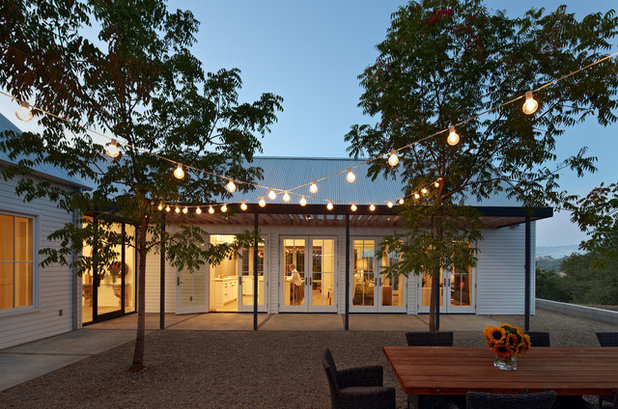
Nick Noyes Architecture
4. Boost evening ambience. “Having a courtyard to eat in was definitely on the dream list,” says homeowner Geri Biehl. “We have family dinners here almost year-round.” And what could be better for hosting alfresco dinner parties that linger long into the evening than a lovely pea gravel courtyard? Try crisscrossing strands of bistro lights!
Having the right mood lighting will bring your outdoor dining room to life in the evening hours. Here are more ways to make that happen:
- Hang solar-powered lanterns from trees overhead.
- Dangle lanterns filled with battery-powered candles from beneath a shade umbrella.
- Line up big glass hurricanes down the center of the table or along paths.
- Wind string lights around the trunk of a tree or the pole of an umbrella.
- Surround your table with solar-powered stake lights in the landscaping.
See the rest of this home
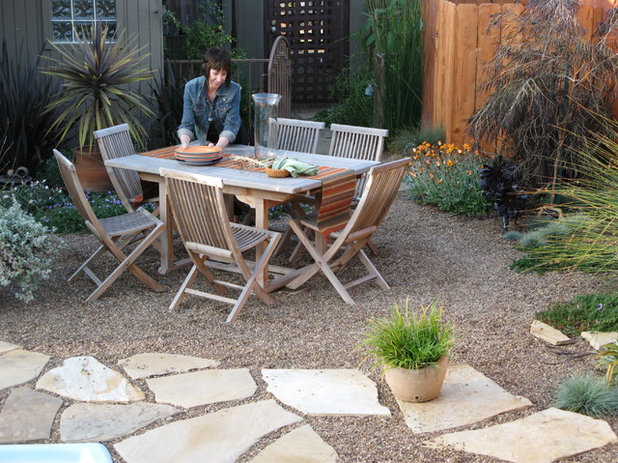
debora carl landscape design
5. Mix it up with patio pavers. The beauty of using gravel in the landscape is that it offers tremendous flexibility when it comes to changes in ground materials, blending with pavers and other materials. Use pavers to define the border of your outdoor dining area or to create a transition from home to garden.
Here are some patio paver tips:
- For a modern look, choose square or rectangular pavers.
- For a more traditional or natural look, choose pavers with an irregular shape, like those in the photo above.
- Consider adding a steppingstone path leading to your gravel dining area — your guests in heels will appreciate it!
Patio Pavers Rock Out
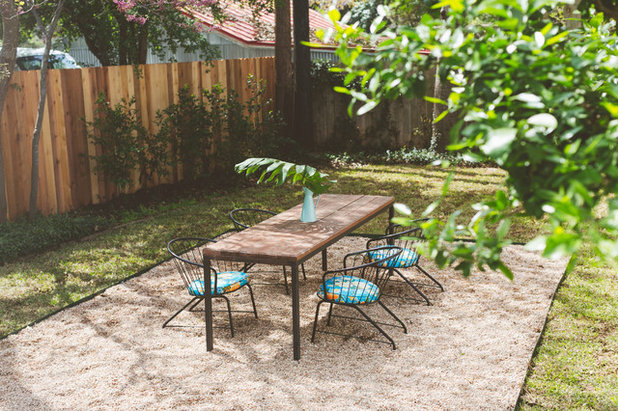
Heather Banks
6. Know the pros and cons before you begin. For homeowners Merrilee and Pittman McGehee, a pea gravel outdoor dining zone in their backyard in Austin, Texas, makes for a low-maintenance space, which they love and use often for entertaining. It’s not, however, completely without its pitfalls. Knowing what you’re getting into before you commit can help save headaches down the road.
Here are a few potential downsides to gravel:
- Weeds can grow through gravel (even if you lay landscaping cloth underneath), meaning you may have some pulling to do.
- Gravel may get tracked and blown into other areas of the garden, which can be a hassle to keep clean if you’re planning to use mixed materials in your garden (gravel next to lawn or pavers, for example).
- It can be difficult to move anything on wheels (wheelbarrow, stroller) over gravel.
- Gravel may need to be topped off and leveled from time to time if you notice major unevenness.
See the rest of this home
Learn more about using gravel and stone in the landscape
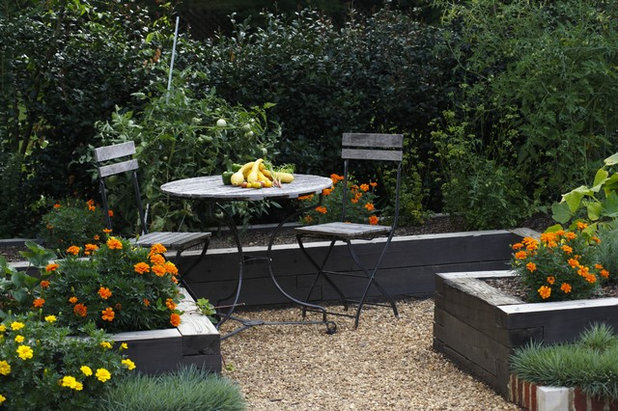
Troy Rhone Garden Design
7. Lay a proper foundation. A pea gravel patio can be extremely functional, but the right preparation is important. Landscape architect Troy Rhone says the key to successfully installing a gravel patio is to have a firm base, which is created by tamping the soil underneath. With a firm base, the gravel won’t sink in, allowing you to use a relatively thin layer (only half to 1 inch) of gravel.
Should you do it yourself? A gravel patio is a DIY-friendly project, but it’s not for everyone. Here are a few questions to ask yourself to determine whether to hire help:
- Are you comfortable doing heavy lifting? Gravel is heavy, and covering even a small patio will require some serious lifting.
- What is your soil like? Dense clay soil will do well as an underlayer on its own, but loose or sandy soil will need an additional layer of crushed rock (also called base rock), making for a more labor-intensive project
Dream Spaces: 10 Secluded Garden Nooks
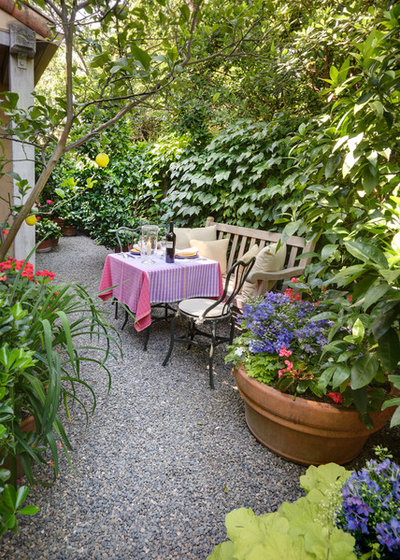
Dave Adams Photography
8. Sneak in a side yard dining area. Pea gravel is perfect for making the most of small and unusually shaped outdoor spaces since it’s simple to spread out wherever you need it. And in a side yard like the one shown here, using gravel as both a flooring and path material keeps the compact space feeling surprisingly open. A petite table and chairs make a sweet spot for sipping morning coffee or enjoying a special dinner for two.
Things to remember before you gravel up your side yard include:
- Is this a path for wheeling your garbage cans? If so, a solid flooring material may be preferable.
- Consider adding a transitional flooring near the entrance to your home to keep gravel from getting tracked indoors.
8 New Uses for Your Side Yard
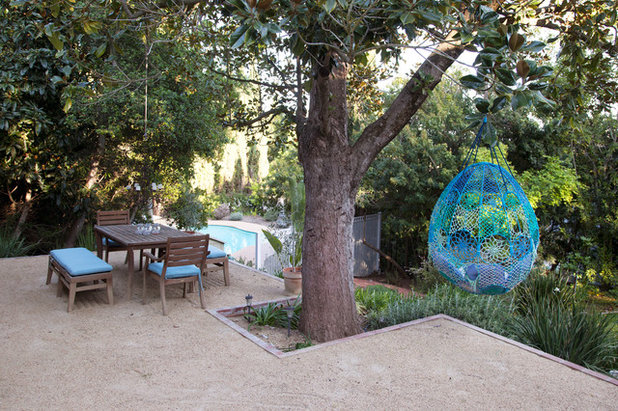
Margot Hartford Photography
9. Pull things together with color. Homeowner and interior designer Beverley Harper used her favorite color, Mediterranean blue, as a common thread, visually linking the separate outdoor seating areas. Color is a powerful force in design, even in small doses — so think intentionally about which color (or colors) you want to focus on in your outdoor space before you shop for seat cushions, plant pots and other accents.
Trying to decide on an outdoor color scheme? Here are a few things to consider:
- What color lifts your heart and makes you happiest?
- Which colors remind you of the best vacation you’ve ever had?
- Do you want the colors of your outdoor room to pop or to blend in with the rest of the garden?
- What colors are already in your outdoor space?
See the rest of this home
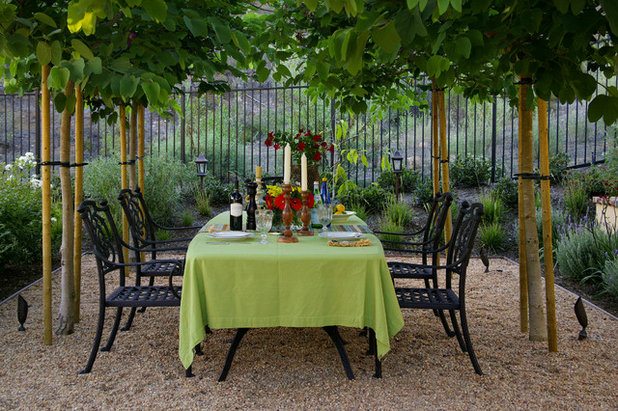
Site Design Studio
10. Deck out your dining spot with the right details. An outdoor dining space isn’t complete until you host your first dinner! Get ready for company by outfitting your table just as you would the indoor version. Don’t forget:
- A tablecloth and cloth napkins
- Candleholders
- Fresh flowers or small potted herbs
- Evening lighting (string lights, lanterns)
- Dishes and glassware (either your regular set or unbreakable versions)
Explore Your Garden Personality: The Extrovert
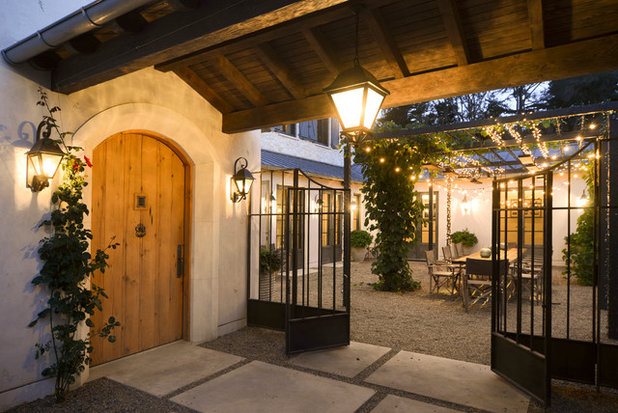
FGY Architects
Tell us: Are you a fan of the gravel look?





